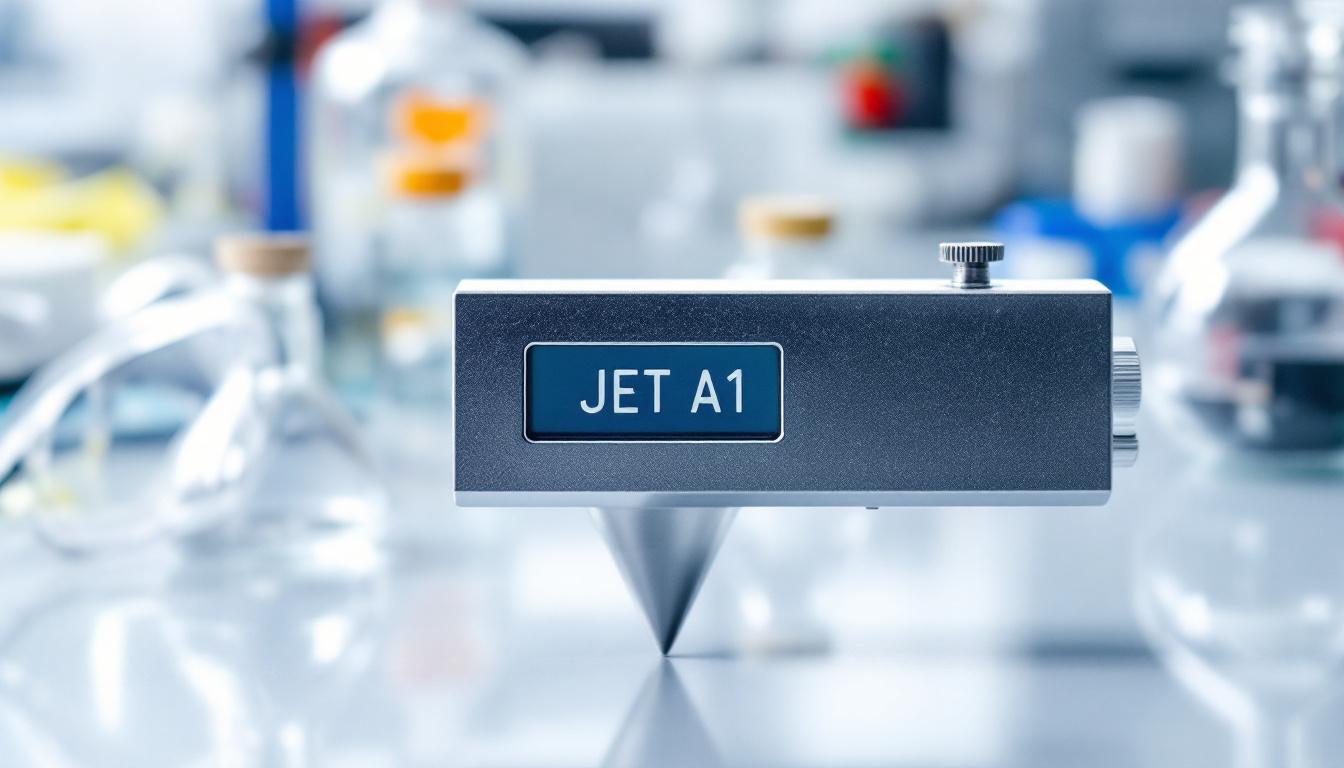
How to Measure Jet A1 Fuel Viscosity
At GLOBAL TERMINAL NETHERLANDS B.V, we understand the critical role Jet A1 fuel viscosity plays in aircraft performance and safety.
Accurate measurement of this property is essential for ensuring optimal engine function and fuel efficiency.
In this post, we’ll explore the methods and best practices for measuring Jet A1 fuel viscosity, providing you with practical insights to enhance your fuel management processes.
What Is Jet A1 Fuel Viscosity?
Definition and Significance
Jet A1 fuel viscosity measures the fuel’s resistance to flow. This property significantly impacts aviation fuel management and aircraft performance. Viscosity affects various aspects of flight operations, from fuel pump efficiency to engine combustion.
Impact on Aircraft Performance
Viscosity directly influences how Jet A1 fuel behaves during flight. Low viscosity can result in fuel leaks and inadequate lubrication, while high viscosity may cause pumping issues and incomplete combustion. ASTM D1655 specifies a maximum allowable viscosity of 8 mm²/s at -20°C for Jet A1 fuel. This standard ensures optimal fuel flow and atomization in aircraft engines.
Temperature’s Influence
Temperature dramatically affects Jet A1 fuel viscosity. As temperatures decrease, viscosity increases, which can create problems at high altitudes where ambient temperatures often drop to -40°C or lower. The Stabinger Viscometer (standardized in ASTM D7042) enables precise measurements for dynamic viscosity of liquids, including the calculation of kinematic viscosity. This technology proves essential for assessing fuel performance under various flight conditions.
Chemical Composition Factors
The chemical makeup of Jet A1 fuel directly affects its viscosity. Heavier hydrocarbon fractions (particularly those with carbon numbers above 12) tend to increase viscosity. In contrast, lighter fractions (with carbon numbers below 12) decrease it. This relationship proves vital for fuel blending and quality control. Near-infrared (NIR) spectroscopy has emerged as a rapid and accurate method for analyzing fuel composition and predicting viscosity, offering real-time insights into fuel properties.
Measurement and Quality Assurance
Regular testing and adherence to industry standards ensure that Jet A1 fuel meets the stringent requirements of modern aviation. As the aviation industry explores more sustainable fuel options, precise viscosity and density measurement will remain a cornerstone of fuel quality assurance. The next section will explore the various methods used to measure Jet A1 fuel viscosity accurately.
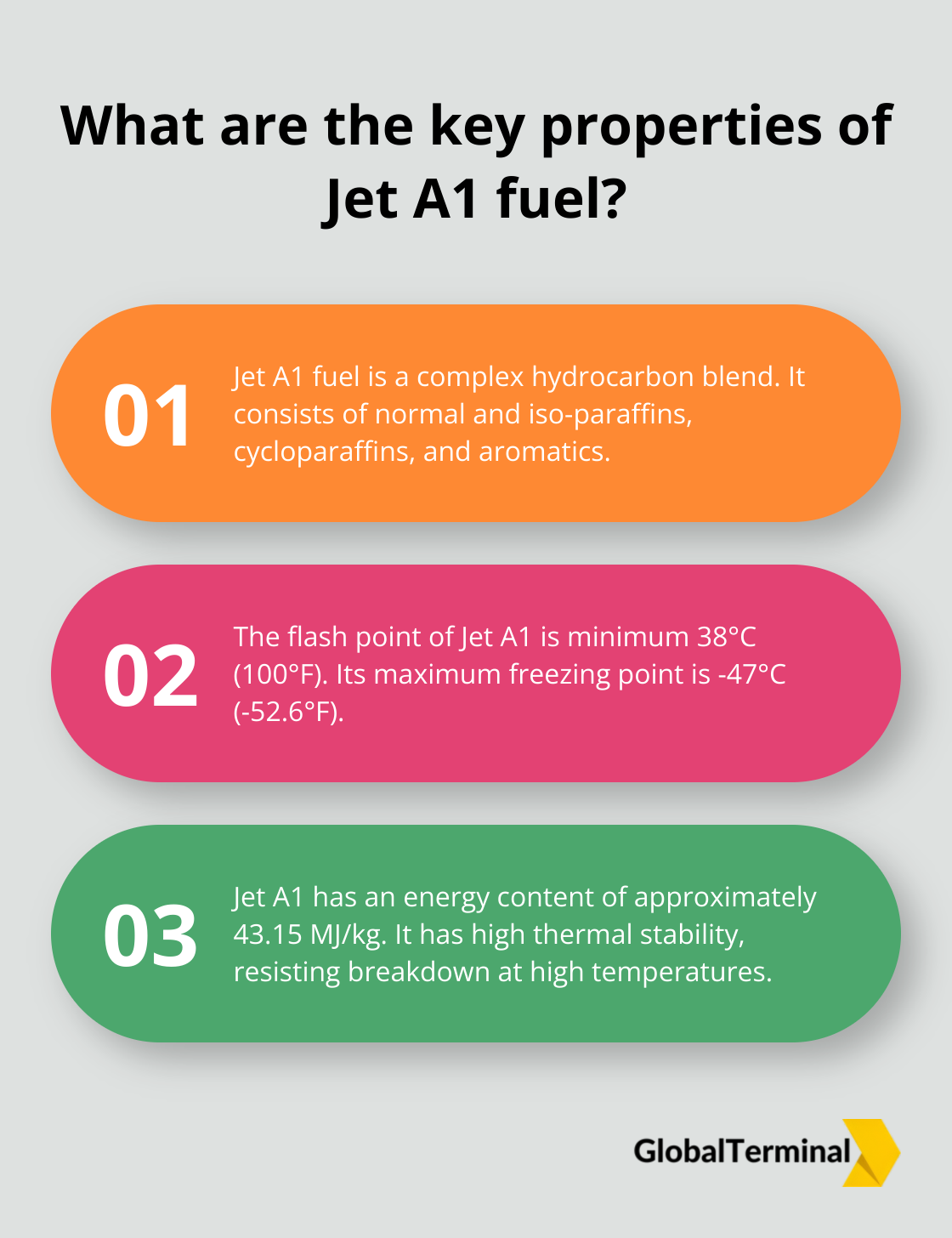
How We Measure Jet A1 Fuel Viscosity
At GLOBAL TERMINAL NETHERLANDS B.V., we prioritize accurate viscosity measurement to ensure the quality and performance of Jet A1 fuel. The aviation industry relies on precise measurements to maintain safety standards and optimize engine efficiency. Let’s explore the primary methods used for measuring Jet A1 fuel viscosity.
Capillary Viscometer Method
The capillary viscometer method, standardized by ASTM D445, is a cornerstone in the industry. This method specifies a procedure for the determination of the kinematic viscosity of liquid petroleum products, both transparent and opaque. We then calculate the kinematic viscosity based on this flow time and the instrument’s calibration constant.
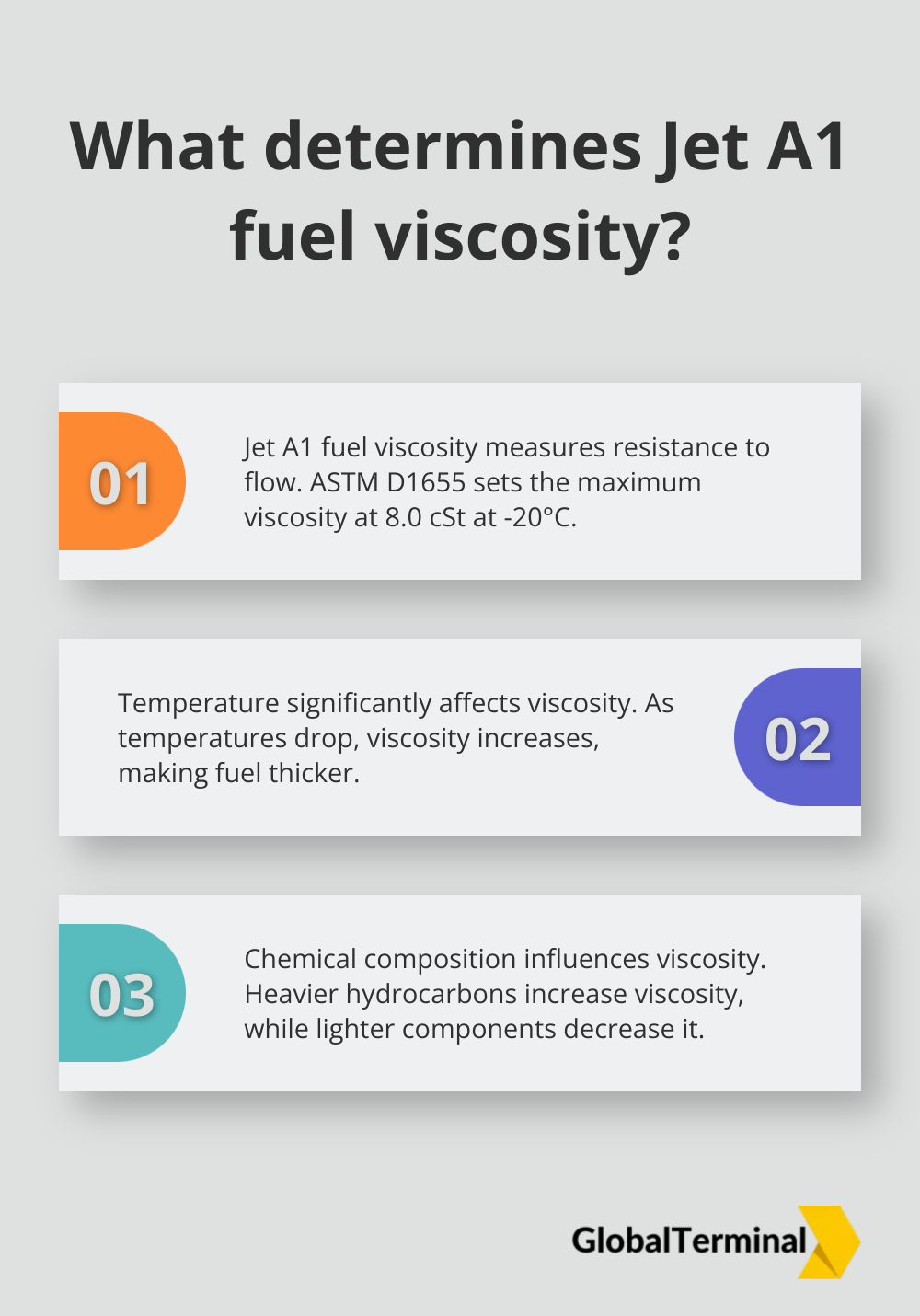
This method requires careful temperature control. We maintain strict temperature conditions to ensure consistent results. While accurate, this method can be time-consuming, especially when multiple measurements are needed.
Rotational Viscometer Method
Rotational viscometers offer a versatile approach to measuring Jet A1 fuel viscosity. These instruments measure the torque required to rotate a spindle in the fuel sample. Some rotational viscometers operate effectively across various temperatures, allowing for comprehensive viscosity profiling.
This method excels at assessing how viscosity changes with temperature, a critical factor in aviation fuel performance. Rotational viscometers enable rapid viscosity checks, which quickly identify any deviations from the required specifications.
Digital Viscosity Meters
Digital viscosity meters have revolutionized Jet A1 fuel testing. The Stabinger Viscometer (standardized in ASTM D7042) represents the cutting edge in viscosity measurement technology. This instrument measures dynamic viscosity and density of liquids, automatically calculating kinematic viscosity.
The Stabinger Viscometer performs temperature scans, providing a comprehensive viscosity profile. This capability proves invaluable for understanding fuel behavior at the extreme temperatures encountered during high-altitude flights.
Digital viscosity meters generate numerous data points per determination. This high-resolution data allows for more accurate trend analysis and quality control. Moreover, these instruments optimize thermal equilibration time dynamically, significantly reducing the overall testing duration compared to traditional methods.
Digital viscosity meters improve testing efficiency dramatically. They allow consecutive measurements on different samples with minimal downtime, enhancing the overall quality assurance process.
The aviation industry’s focus on transitioning to net-zero carbon emissions has intensified the need for precise fuel specifications and testing standards. Advanced digital viscosity measurement technologies play a key role in maintaining the highest standards of fuel quality and safety.
Now that we’ve explored the methods for measuring Jet A1 fuel viscosity, let’s turn our attention to the best practices that ensure accurate and reliable results in these measurements.
Mastering Jet A1 Fuel Viscosity Measurement
Sample Integrity: The Foundation of Accuracy
We collect samples in clean, dry containers to prevent contamination. Exposure to air and moisture can alter the fuel’s properties, so we use glass or metal containers with tight-fitting lids. Before testing, we gently agitate the sample to ensure homogeneity (vigorous shaking introduces air bubbles, which skew viscosity readings). We filter samples through a 75-micron screen to remove any particulates that could interfere with measurements.
Temperature Control: Precision is Non-Negotiable
Temperature significantly influences Jet A1 fuel viscosity. As temperature changes, the molecules of jet fuel move at different speeds, altering the fuel’s volume and, consequently, its density. We maintain our testing environment at a constant temperature, typically 20°C or 40°C, as per ASTM D445 guidelines. High-precision temperature control systems maintain temperatures within ±0.02°C of the set point. This level of control is essential, as even small temperature fluctuations can lead to significant variations in viscosity readings.
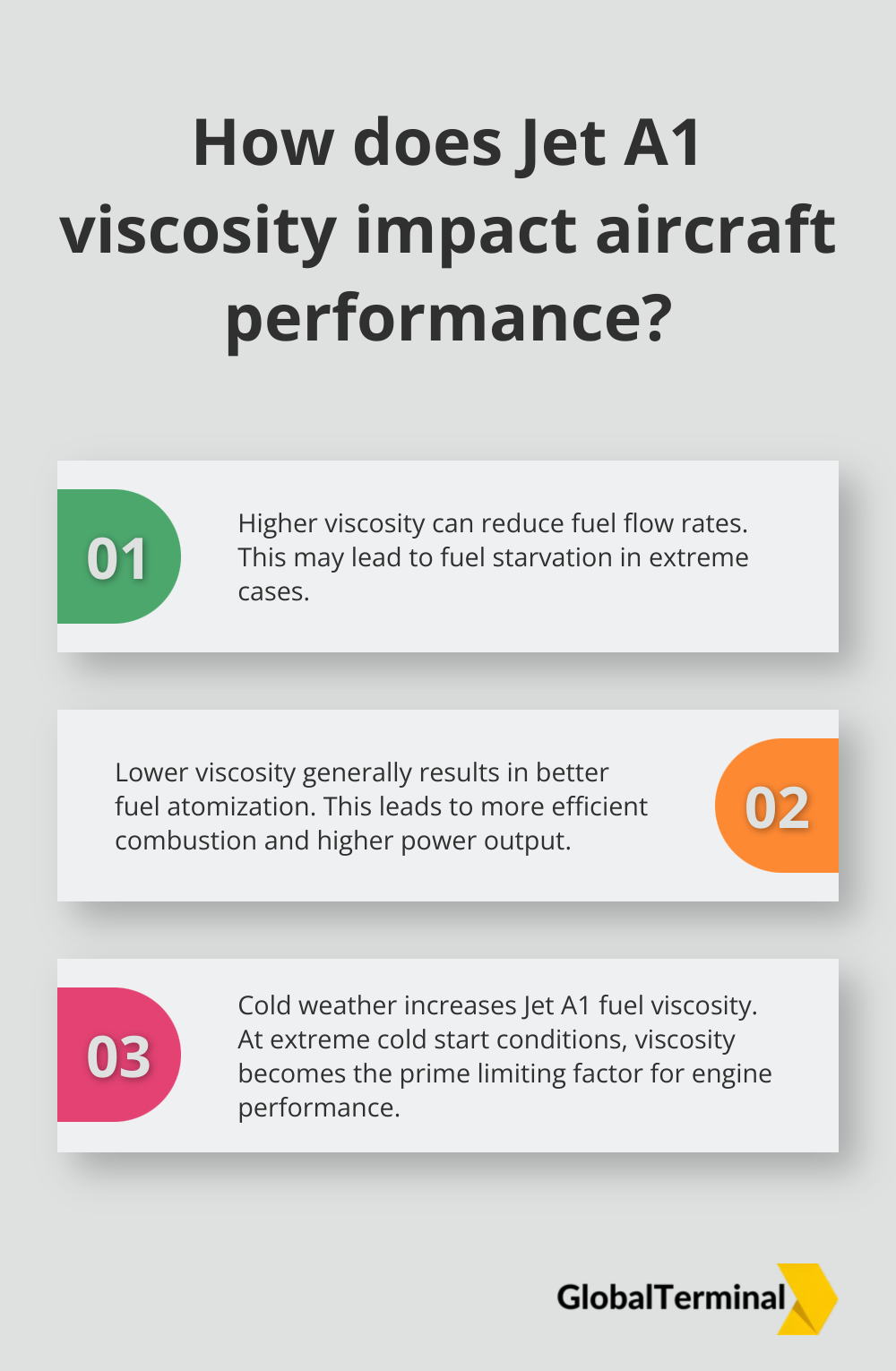
For sub-zero temperature measurements (which are important for assessing cold-weather performance), we use specialized cooling systems. These allow us to measure viscosity accurately down to -40°C, mimicking the conditions jet fuel might encounter at high altitudes.
Calibration: Ensuring Reliable Results
We use certified reference materials (CRMs) traceable to national or international standards for regular calibration. The Standard Reference Materials Program of the National Bureau of Standards provides science, industry, and government with these materials. These CRMs have known viscosities across a range of temperatures, allowing us to verify and adjust our instruments’ accuracy. We perform calibration checks daily and conduct full calibrations at least monthly (or whenever we suspect a drift in measurements).
Data Interpretation and Reporting
Interpreting viscosity data requires both expertise and context. We always consider the measurement temperature, as this is key to understanding the fuel’s behavior in different conditions. Our reports include the viscosity value, measurement temperature, method used, and any relevant observations. We typically express kinematic viscosity in mm²/s (or centistokes), as per industry standards.
Digital data management systems allow for trend analysis over time. This helps identify any gradual shifts in fuel properties that might not be apparent from single measurements.
Final Thoughts
Jet A1 fuel viscosity measurement is fundamental to aviation safety and performance. The methods we’ve explored offer unique advantages in assessing fuel quality. Proper sample handling, temperature control, and calibration ensure accurate viscosity measurement.
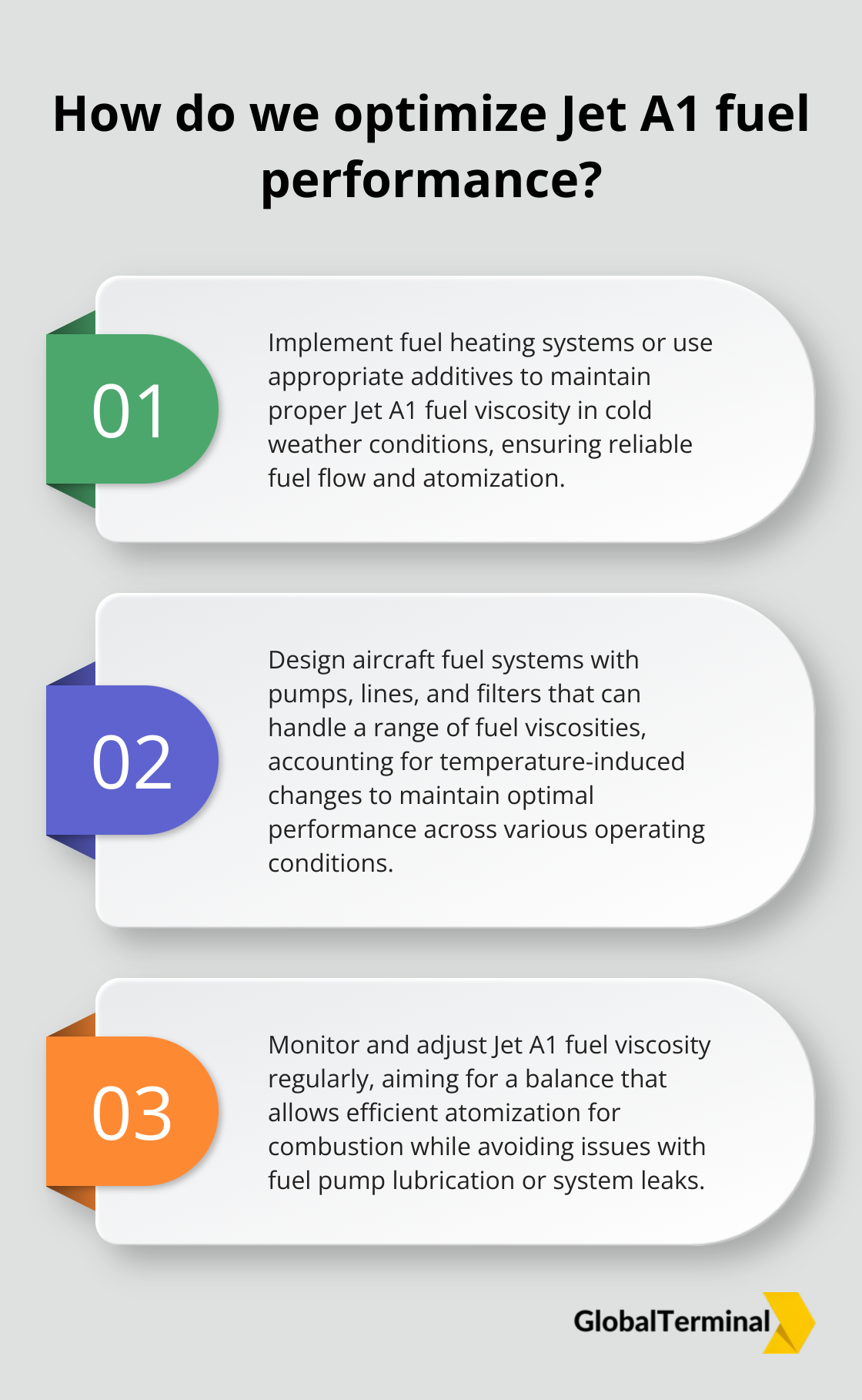
We anticipate future advancements in viscosity measurement technology. Real-time monitoring systems and AI-driven analysis will revolutionize how we assess and manage Jet A1 fuel viscosity. These innovations will enable more precise control over fuel quality, potentially improving engine performance and reducing emissions.
The aviation industry’s sustainability push will drive refinements in fuel composition and viscosity measurement techniques. As alternative fuels gain traction, the need for sophisticated viscosity analysis will grow. We at GLOBAL TERMINAL NETHERLANDS B.V remain committed to meeting the evolving needs of the aviation sector (through our fuel storage and logistics solutions).

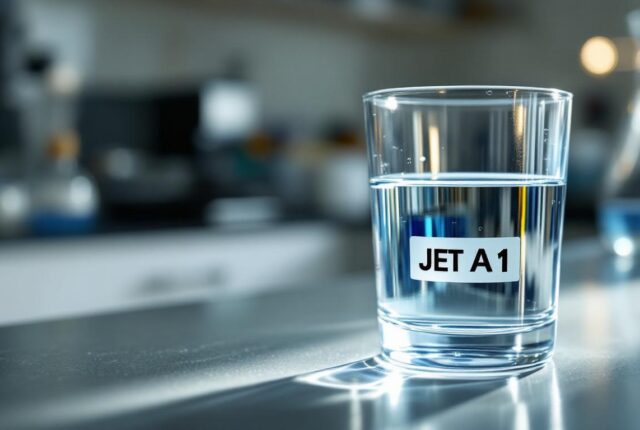
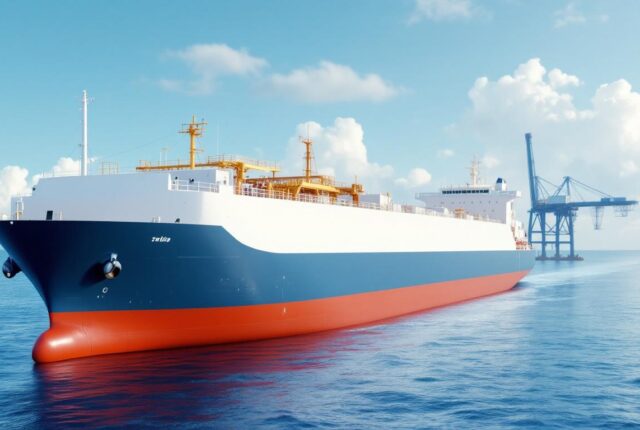
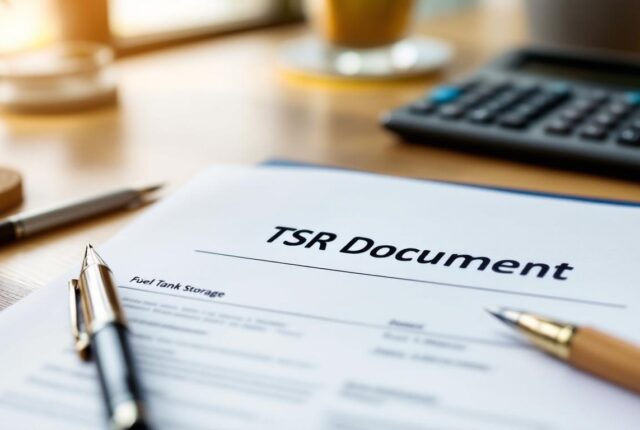

Leave a Reply